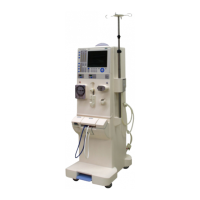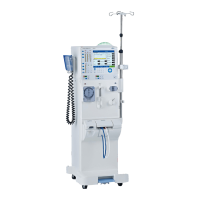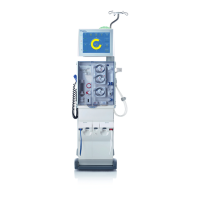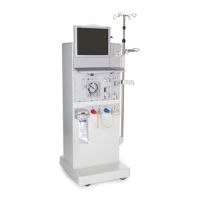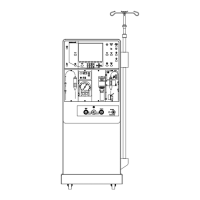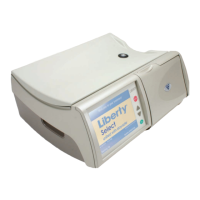1-80 Fresenius Medical Care 4008 4/08.03 (TM)
1.2.3 Heparin pump
Since the blood flows through an extracorporeal circuit during hemodialysis, coagulation would
occur within a short time. The heparin pump allows continuous heparinization of the blood
causing the coagulation time to be prolonged. Since the heparin volume required during hemodi-
alysis depends on the respective patient concerned, it must be determined by the attending
physician.
A syringe plunger is moved by a drive rod, which is connected to a threaded spindle via a sliding
block. A microprocessor-controlled stepper motor causes the spindle to rotate. Depending on the
type of activation, the plunger moves up or down. A Hall sensor indicates the upper end position
of the plunger. The protective system of the pump comprises a speed monitoring unit (slotted disc
with optical sensor) as well as a motor current monitoring unit.
The different syringe types can be selected by means of a coding switch:
0 20-ml syringe
1 30-ml syringe
2 50-ml syringe
3 10-ml syringe
4 – F unused
Caution
Do not change the coding switch position during operation.
Function of the heparin pump:
– RAM and CRC test after turning power on,
– delivery rate adjustable from 0.1 ml to 10 ml in increments of 0.1 ml,
– delivery time preselection (stopwatch) adjustable from 1 min to 9 h 59 min,
– bolus administration.

